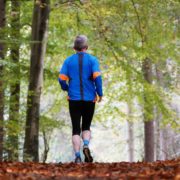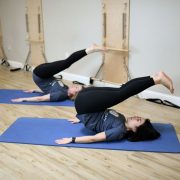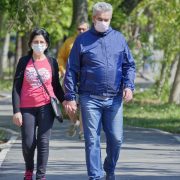When Traditional Physical Therapy Fails…
I’ve been a physical therapist for a very long time — 20 years to be exact — and I’ve seen a lot of changes in healthcare over the course of my career. One of the biggest (and saddest) changes I’ve seen in my field is the overcrowding of clinics. As reimbursements from insurance companies go down, traditional physical therapy clinics have been forced to increase their patient volume. That means you rarely get to spend time with your therapist, and your treatment sessions consist of repetitive exercise sets that you typically can do at the gym or on your own.
If you do manage to get some one-on-one time with your therapist, whether it be for hands-on-care or actual consultation about what’s going on with you, it’s often just a quick 20 minutes. The rest of the time, your poor therapist is usually held hostage by a computer because of all the documentation requirements placed on them, and you’re left on your own doing all those exercises.
Has this happened to you?
With this model of care, it’s impossible for the quality of your treatment NOT to suffer. Many folks I speak with say that traditional physical therapy is a “waste of time.”
Why bother going when they can do everything on their own at home?
Worse, when traditional physical therapy does fail, most people go back to their doctors hoping for a different solution. Many times, the next step for these folks involves unwanted procedures, pain pills, or surgery.
So what do you do if you don’t want to go down the medical route of procedures or surgery, but the “physical therapy” didn’t work?
Well first, you need to understand what physical therapy actually is, seek that out, and don’t settle for anything less.
Physical therapy is NOT just a bunch of general exercises or ultrasound — at least it’s not supposed to be. After your pain is gone and your problem has been resolved, the role of general exercise is to keep your pain gone, and to continue optimizing your strength, performance, and mobility. That’s what we use our Pilates program for.
When you receive proper physical therapy in the way it was intended, it looks something like this…
Your therapist will first give you a proper examination and an actual diagnosis. Your physical therapy diagnosis might be different than your medical diagnosis. In fact, it should be. For example, you may come to us with a diagnosis of “bulging disc,” but our job is to figure out WHY your disc is bulging. Our diagnosis is going to be related to the specific movements, habits, and musculoskeletal deficiencies that led you to having that problem in the first place (discs don’t just bulge spontaneously). Once we know that, we can come up with a plan for you.
Here’s an example…
Let’s say your bulging disc is due to poor sitting posture, a weak core, and poor mobility in your spine. When your spine doesn’t move well and you sit too much, compensations like bulging discs can occur. Your plan might then consist of strategies for better, less painful sitting postures, as well as some help getting your spine back to full mobility again — so that your bulging disc no longer irritates you.
At this stage in your treatment, any “exercises” given to you should be corrective, very specific to your problem, and should be prescribed specifically to you.
There should be nothing cookie-cutter or general about them — and they should be working!
When you have the right “movement prescription” and when your exercises are corrective versus general — your pain goes away, your problem gets resolved, and most importantly, you’ll know exactly why and can even replicate this on your own in the future.
Once this has all been achieved, THEN we can get you back to the fun stuff like exercises at the gym, Pilates, or yoga — the stuff that is designed to keep you feeling healthy, active, and mobile.
Getting rid of something like back, knee, or neck pain doesn’t have to be complicated. It doesn’t have to involve pills, procedures, or surgery. But it may require you to be a bit open-minded about HOW you receive physical therapy.
If you’ve had a frustrating experience with physical therapy in the past, don’t just give up!
Consider working with a specialist practice like ours that operates differently from traditional clinics.
Click here to request a Discovery Visit.
It’s completely FREE! A discovery session serves as an opportunity for you to “discover” what’s going on with your body and what we do in our practice. You’ll speak with one of my specialists, find out if we’re a good fit for you, and then get started on a path to natural recovery!











